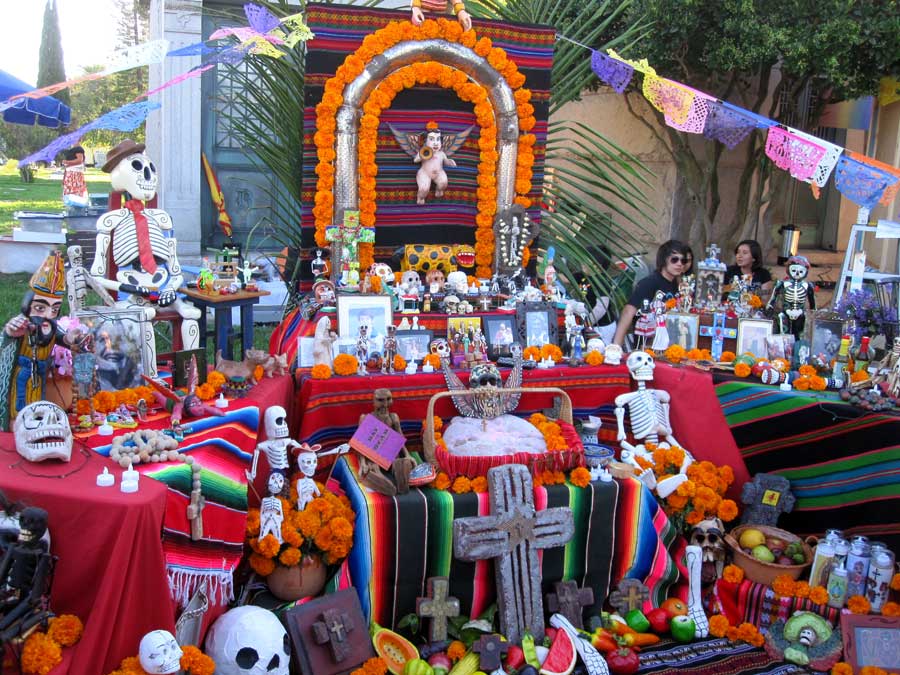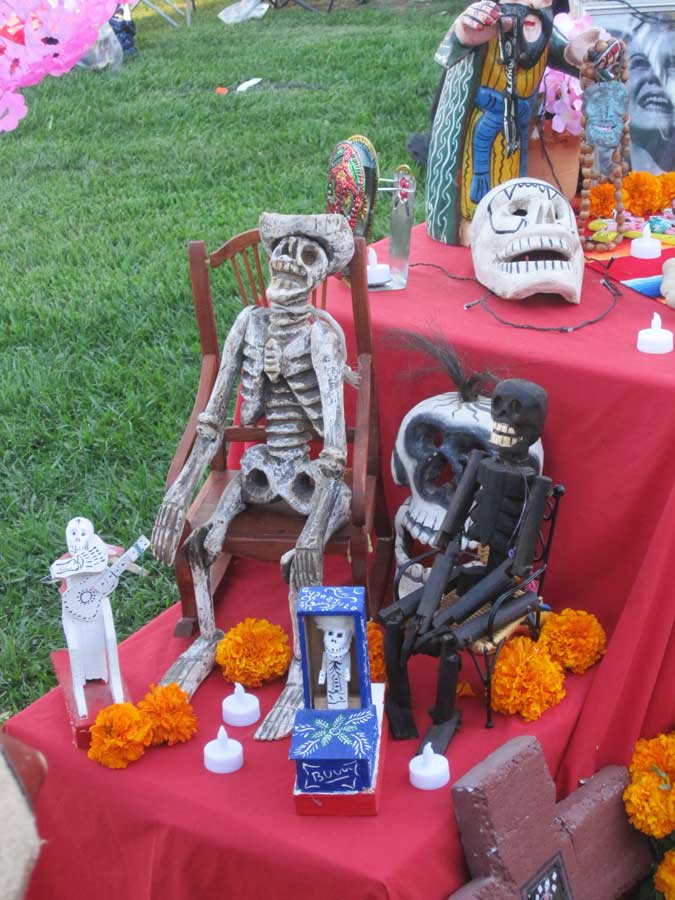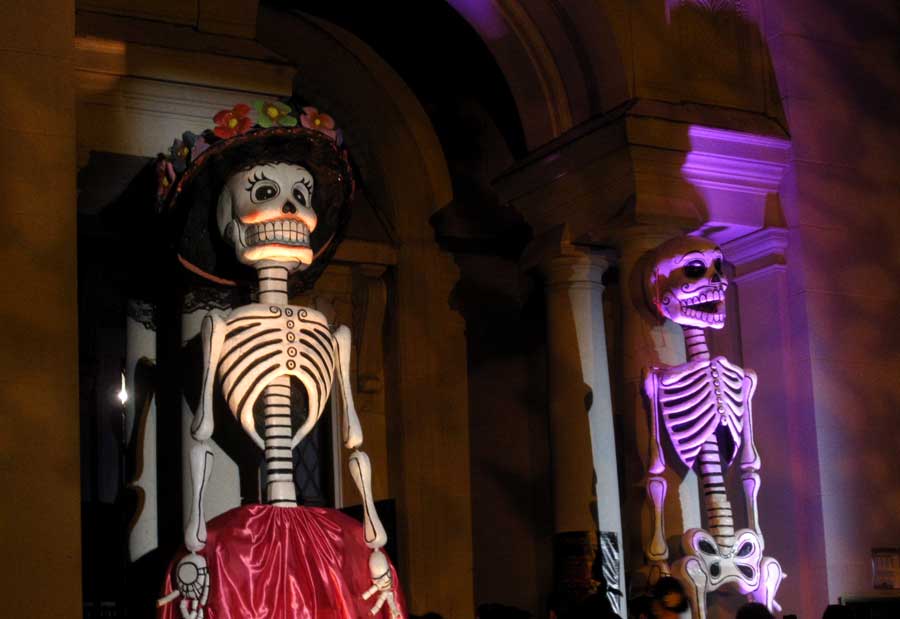Día de los Muertos, a history of thousands of years…
Día de los Muertos, otherwise known as Day of the Dead, is an amazing and wonderful holiday honoring and remembering passed loved ones. Rich in culture and history, it is often misunderstood as a form of Halloween. It is based on an old holiday, created by Meso-American indigenous culture of the Aztecs, and dedicated to the goddess Mictecacihuatl (Our Lady of the Dead), who presided over and protected the dead. Originally celebrated at the time of the corn harvest, it would last a whole month, beginning in July and ending in August. But when the Spanish invaded Mexico, the Spanish tried to eradicate this holiday, fearing it to be a celebration of death. The Spanish did not understand it was a celebration of the cycle of life and that with death there is rebirth, like the crops that were being harvested at that time of year. The Spanish tried very hard to stop the celebrations but the indigenous people would not let go of their beloved traditions. As a compromise the customs became intertwined with the Christian commemoration of All Saints’ Day and All Souls Day. Because there were also many other pre-Hispanic cultures of Meso-America that celebrated days honoring the dead such as Mayans, Toltecas, Tlaxcaltec, Chichimec, Tecpanec many of their traditions were added to the celebrations, giving this holiday a history of thousands of years.

A family altar with religious items, photos and ofrendas. The celebration traditionally starts at midnight the night of Oct. 31 and goes to November 2. Traditionally November 1 is to honor children and infants Día de los Inocentes (“Day of the Innocents”) and deceased adults are honored on November 2 Día de los Muertos (“Day of the Dead”). It is a gathering of family and friends, prayer, signing and celebrating, joyous time of celebration in remembrance of those passed. Ornate altars are created and decorated with marigolds, sugar skulls, ofrendas (offerings) such as the favorite foods and beverages of the departed even possessions of the deceased. Some choose to celebrate at home and others go to the graveyards to clean the graves, hold all night vigils, and leave candles and flowers. For many communities it becomes a festival for all to participate in with parades and street parties.

A family altar dedicated to couple who owned a local community market. A common symbol of the holiday is the skull (calavera), in the form of masks, figures, sugar skulls, dioramas, puppets, and paintings called calacas (colloquial term for “skeleton”). People dress up as the deceased with elaborate face paint and clothing. Some people even wear shells, nuts or bells, so when they dance, the noise is suppose to wake up the dead to celebrate.

Handcrafted happy small calacas on a altar. Many of the skulls and skeletons made for the holiday are happy, bright and festive. In keeping with energy of the holiday they are meant to joyous, to live our life to the fullest. Though some calacas are made to remind us that death is a fate that even the rich can’t avoid such as the modern “Catrina”. Catrina are skeletal female figures in fancy clothing and accessories, normally made as a figure or painting. They are based on the work of Mexican printmaker José Guadalupe Posada, La Calavera Catrina, which was meant to satirize the life of the upper classes. Since his death his images have become associated with Día de los Muertos. Though like many elements of the Day of the Dead even Catrinas is seen as a reinvisioning of the Aztec Goddess Mictecacihuatl by some.

Giant calacas at the Day of the Dead, Hollywood Forever event. As the years go by more traditions are added to the Day of the Dead, with the modern age and technology more people can now enjoy and celebrate a once little known holiday. Originally from Mexico it is a holiday now celebrated the world over, with decorations, food, music, parties and the tradition of remembering our loved ones, a concept many can relate to and be joyous about.Until next time, Safe Travels!
